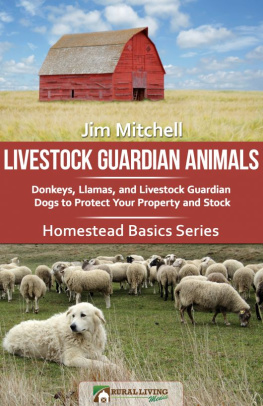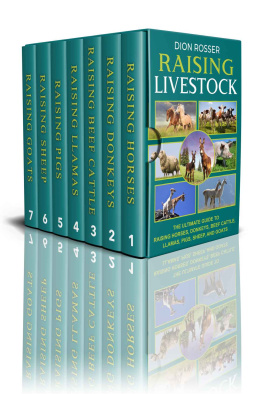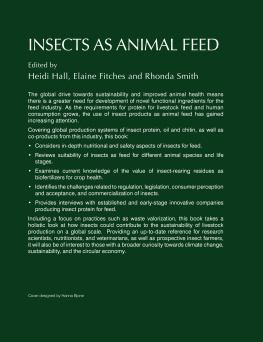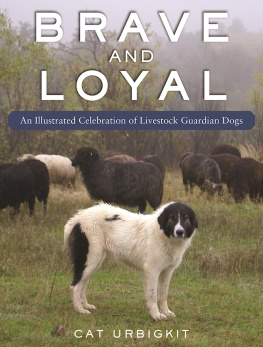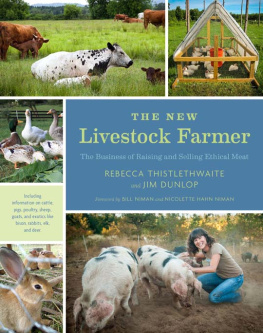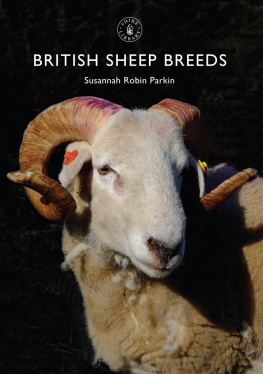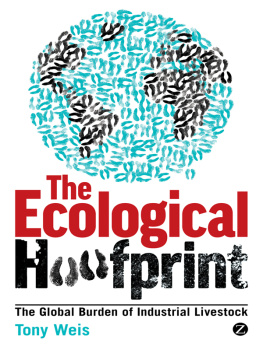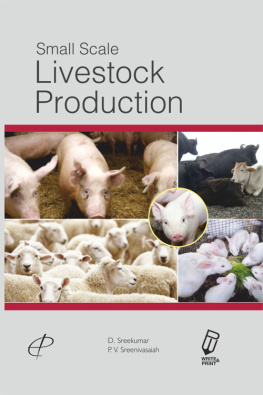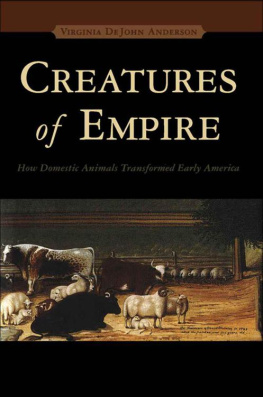Contents
Guide
Pagebreaks of the print version
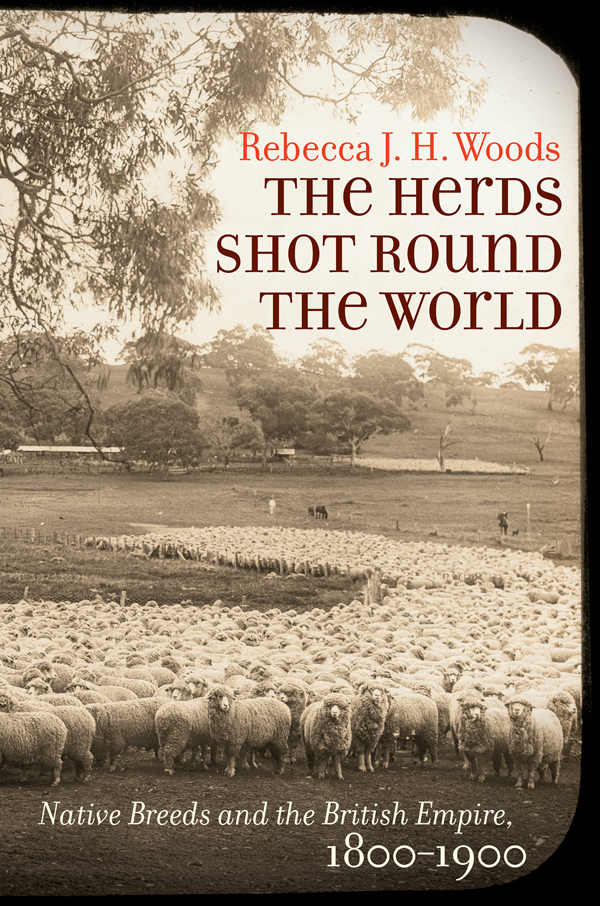
The Herds Shot Round the World
FLOWS, MIGRATIONS, AND EXCHANGES
Mart A. Stewart and Harriet Ritvo, editors
The Flows, Migrations, and Exchanges series publishes new works of environmental history that explore the cross-border movements of organisms and materials that have shaped the modern world, as well as the varied human attempts to understand, regulate, and manage these movements.
The Herds Shot Round the World
Native Breeds and the British Empire, 18001900
Rebecca J. H. Woods
The University of North Carolina Press CHAPEL HILL
The publication of this book was supported in part by a generous gift from Cyndy and John OHara.
2017 The University of North Carolina Press
All rights reserved
Set in Espinosa Nova by Westchester Publishing Services
Manufactured in the United States of America
The University of North Carolina Press has been a member of the Green Press Initiative since 2003.
Library of Congress Cataloging-in-Publication Data
Names: Woods, Rebecca J. H., author.
Title: The herds shot round the world : native breeds and the British empire, 18001900 / Rebecca J. H. Woods.
Other titles: Flows, migrations, and exchanges.
Description: Chapel Hill : University of North Carolina Press, [2017] | Series: Flows, migrations, and exchanges | Includes bibliographical references and index.
Identifiers: LCCN 2017019373 | ISBN 9781469634654 (cloth : alk. paper) | ISBN 9781469634661 (pbk : alk. paper) | ISBN 9781469634678 (ebook)
Subjects: LCSH : Animal industryGreat BritainHistory19th century. | Sheep breedsGreat Britain. | Cattle breedsGreat Britain. | Endemic animalsGreat Britain. | Great BritainColoniesHistory19th century. | Industrial revolutionGreat BritainHistory19th century. | Agrobiodiversity.
Classification: LCC HD 9436. G 72 W 66 2017 | DDC 338.1/76082094109034dc23
LC record available at https://lccn.loc.gov/2017019373
Cover illustration: Large flock of merino sheep, South Australia, ca. 1900.
National Library of Australia, nla.obj-144081153.
Portions of chapter 4 were previously published in a different form as From Colonial Animal to Imperial Edible: Building an Empire of Sheep in New Zealand, c. 18801900, Comparative Studies of South Asia, Africa, and the Middle East 35, no.1 (2015): 11736; and Breed, Culture, and Economy: The New Zealand Frozen Meat Trade, 18801914, Agricultural History Review 60 (2012): 288308. Used here with permission.
For my parents
Contents
Illustrations
Graphs
Acknowledgments
The sources of aid and assistance, both material and intellectual, that I have benefited from over the course of this works development from the germ of an idea to published monograph are many. First and foremost among the debts I have incurred is that which I owe to Harriet Ritvo, without whom this work would scarcely have been conceived, much less completed. She has been an unparalleled mentor, advisor, and friend throughout. Without Alistair Sponsel, this book would not be so aptly titled. Early on, the support of MITs History, Anthropology, and Science, Technology and Society (HASTS) graduate program and of several funding agencies made it possible for me to undertake the work necessary to complete its first iteration as a dissertation. Preliminary research in the United Kingdom was funded by a Dissertation Proposal Development Fellowship from the Social Sciences Research Council (SSRC), while an extended research trip to New Zealand and the United Kingdom in 200910 was possible thanks to an International Dissertation Research Fellowship (SSRC) and a Fulbright Fellowship to New Zealand (Fulbright-IEE and Fulbright New Zealand). Completing the final stages of the project would hardly have been possible without the benefit of a Mellon-ACLS Dissertation Completion Fellowship awarded by the American Council of Learned Societies in 2012. The History Project at Harvard University and the University of Cambridge also generously funded a final research trip to the United Kingdom in April 2013.
Practical and material support from these funding agencies made it possible for me to undertake the work necessary for executing this project; the intellectual and moral support of mentors and colleagues in the HASTS graduate program at MIT were no less integral to the early phases of this project. David Jones and Janet Browne at Harvard University were essential to the formulation and execution of this project at its earliest stages, and I am grateful for their support. Chris Capozzola, Stefan Helmreich, David Kaiser, Leo Marx, and Heather Paxson each made my time at HASTS intellectually richer. Etienne Benson, Lisa Messeri, Nadya Peek, Sophia Roosth, Shira Shmuely, David Singerman, Alma Steingart, Michaela Thompson, and Emily Wanderer have been valued interlocutors over the years.
I also owe a special thanks to Bill Turkel at the University of Western Ontario, who set me on the path to graduate school, and who gave me necessary early encouragement. Parts of this work benefited from feedback received at several conferences and workshops, including the HASTS Program Seminar (2012), the Dissertation Proposal Development Fellowship Animals Studies group (June and September 2008), the International Workshop for PhD Scholars in Environmental History (Australian National University, October 2010), the International Dissertation Research Fellowship workshop (March 2011), the Harvard Symposium on Energy and Environment in Global History (Harvard University, April 2011), the German Historical Institute Conference on Global Cash Crops (June 2011), and the Nonhuman Empires: Between Agents and Actants Conference at the Department of History and Philosophy of Science (University of Cambridge, March 2012). I especially thank Jim Secord and Thomas Dunlap for their intellectual contributions to my work.
The Columbia University Society of Fellows in the Humanities provided an ideal intellectual home in which to transform this project into a book. The intellectual community I found there has made this project a richer and more mature one than it otherwise would have been. Thanks to my fellow fellows Vanessa Agard-Jones, Teresa Bejan, Ben Breen, Maggie Cao, William Deringer, Brian Goldstone, David Gutkin, Hidetaka Hirota, Murad Idris, Ian McReady-Flora, Dan-el Pedilla Peralta, Carmel Raz, and Grant Wythoff. Thanks also to Karl Apphun, Christopher L. Brown, Deborah R. Coen, Isabel Gabel, Matthew Jones, Eugenia Lean, Malgorzata Mazurek, Susan Pedersen, Pamela Smith, Deborah Valenze, and Carl Wennerlind. And a special thank-you to Eileen Gilooly for her unstinting support and for keeping the whole show running.
While researching this book, I benefited greatly from the assistance and expertise of a number of librarians, archivists, and livestock breeders close to home and throughout the United Kingdom and New Zealand. Critical support came from the librarians and archivists at the British Library; the Walter Frank Perkins Agricultural Library (Southampton University); the Museum of English Rural Life (University of Reading); the University Library (University of Cambridge); the National Archives of Scotland; the Herefordshire Record Office; the Lincolnshire Record Office; the Derbyshire Record Office; the Hereford Cattle Society; the Lincoln Sheep Breeders Association; the Rare Breeds Survival Trust; the library of the Royal Agricultural Society of England; the Australian National Library; Archives New Zealand and the Alexander Turnbull Library in Wellington, New Zealand; and the Hocken Library (University of Otago). Special thanks to John Charles, Associate University Librarian at Massey University (Palmerston North, NZ) and to Michelle Baildon at MIT. Les Cook, Peter Talbot, and Bev Trowbridge were among the practical breeders who generously shared their time and knowledge with me.


